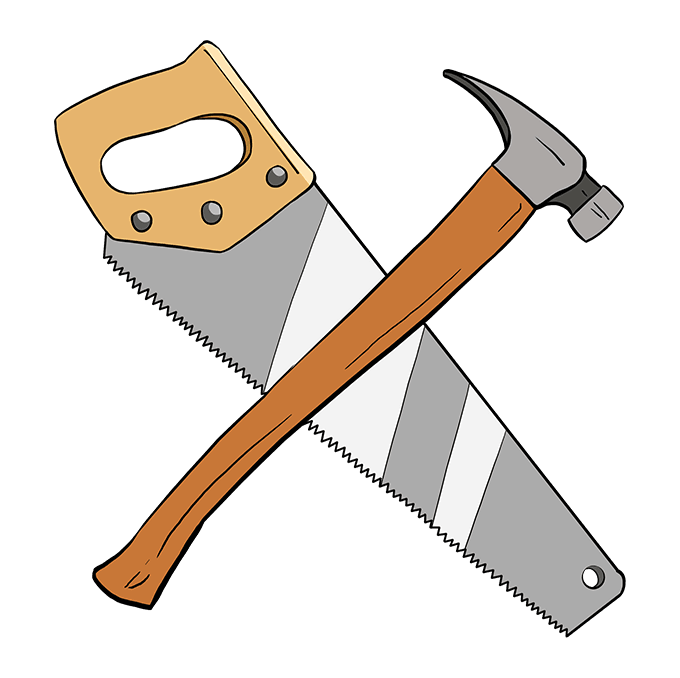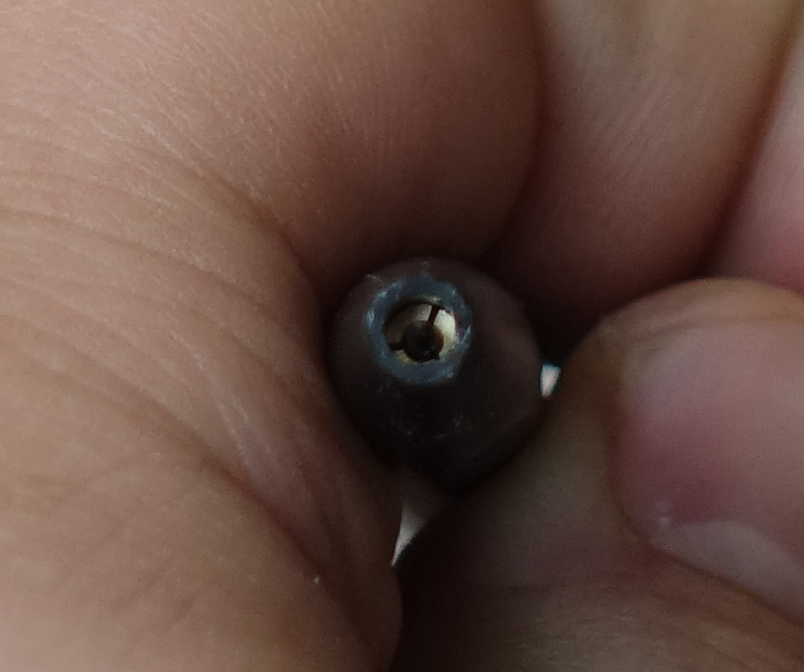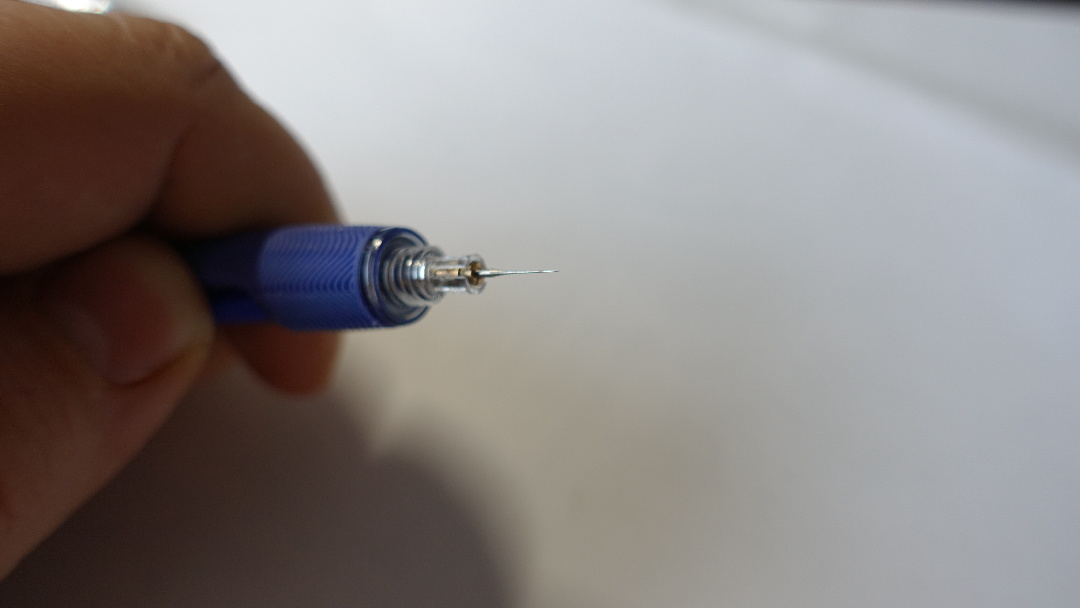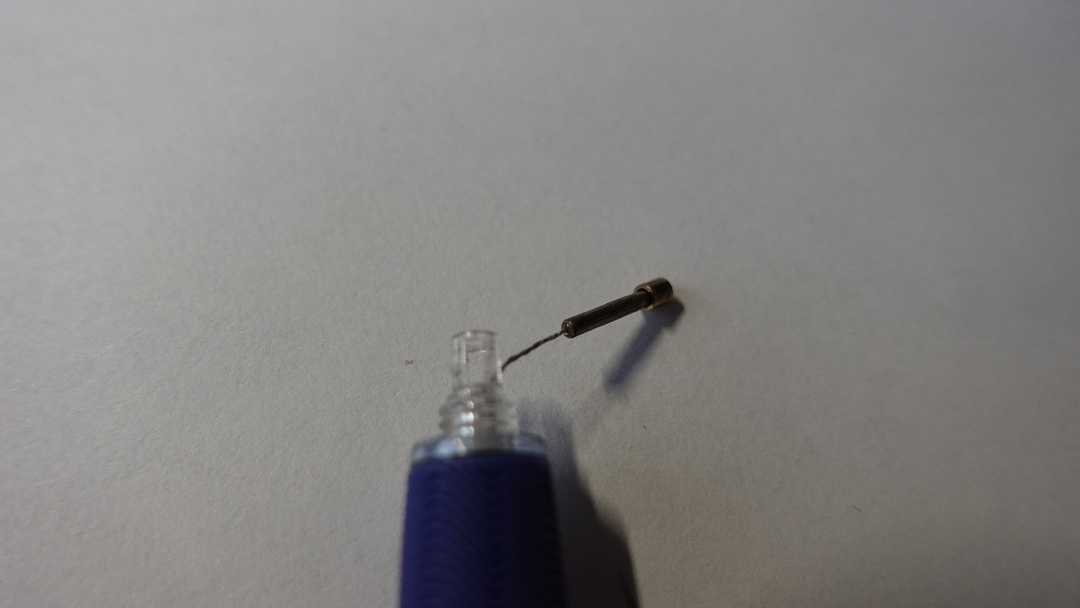

yeah that’s definitely the toughest part… the collet needs to come out the front of the pencil, it can’t fit out the back. It is barbed (visible in this pic if you zoom way in) so it digs into the plastic pretty damn well, but it can be pulled straight out.
I basically just used brute force. it should be pretty safe to pull straight outwards on the collet by the ring part (the part that moves freely) since that way there’s no bending, its all metal on metal, in tension, and the thin members of the collet are pulled snugly together and stressed evenly. you can use a small pliers but you don’t want to squeeze too much. either grab the ring head-on and squeeze enough to get a grip, or use a sufficiently tiny pliers to grab from the side between the spring and the collet ring, not squeezing basically at all and just hooking the jaws of the pliers under the ring and pulling out. Some wiggling/wobbling the collet (while still pulling outwards so nothing bends) as you go could help but will probably make the fit looser when you go to put it back in so don’t go overboard.
I don’t think there’s a great way to push it out from the rear either, since behind it there’s a narrowing of the hole in the plastic to about the same size as the one on the back of the collet. Maybe if you had just the perfect 1.5mm rod or something but it would probably just buckle.











Yessss! So glad it worked!
To explain the confusion: I actually pulled the entire lead tube out before separating the collet from the lead tube, (the main body/grip of the pencil is a separate piece of plastic!) so I had plenty of room to grab the collet with tools. However your way might be better, since as I recall it took a fair amount of force to pull the lead tube out the back, and after doing it a few times the two halves no longer seem to click together and stay very well.